California has a housing crisis. Why are thousands of farmworker apartments closed each year?
California farmworkers struggle to find housing — yet the state lets thousands of affordable units sit empty for three to six months every year.
These 24 migrant housing centers stretch from the Oregon border to Kern County and contain rent-subsidized apartments that have operated the same way for a half-century, even as the needs of farmworkers have changed significantly.
Most of the 900,000 workers who power California’s agricultural industry no longer migrate from crop to crop or return to Mexico when the growing season ends, preferring to remain settled in their communities.
The state’s lack of affordable housing makes it challenging for those who still migrate to live near the fields where they work. The migrant centers help them, until they close at the end of the season.
Families who would otherwise stay in the units permanently are forced to vacate them. The majority return to Mexico, while others travel to nearby states, including Arizona and Texas.
The annual moves uproot children from school, perpetuating a cycle that compromises their chances of leaving low-wage work and keeps them coming back to the fields.
The migrant centers reflect California’s outdated view of farmworkers, an immigrant-dominated labor force that picks, packages and processes a large portion of the nation’s produce.
Many earn minimum wage and struggle to find safe, affordable places to live, even after working in fields around the state through blazing heat and wildfire smoke. Their immigration status and lack of education and English skills make them as vulnerable as they are essential.
Advocates and experts say California should reimagine the way it houses farmworkers to improve equity and upward mobility.
“There have been any number of concerns over the years related to the centers,” said Ilene Jacobs, California Rural Legal Assistance director of litigation, advocacy and training. “Not because there’s something wrong with the centers, but because there’s something wrong with the way we treat farmworkers.”
The decline of migrant farmworkers
Mexican labor in California’s fields exploded in 1942 under the federal Bracero Program, named for the Spanish word that translates to “laborer.” It brought millions of men into the state as seasonal workers before officials ended the program in 1964.
But the influx continued. Some farmworkers were living in tents when the state created its migrant housing program in the 1970s. Today, some older residents still call the complexes “camps,” even though they are now filled with rows of mostly two, three and four-bedroom apartments.
During fiscal years 1989 through 1991, about 44% of California’s farmworkers were migrants, according to U.S. Department of Labor data. That number declined steadily as farmworkers started families in the U.S.
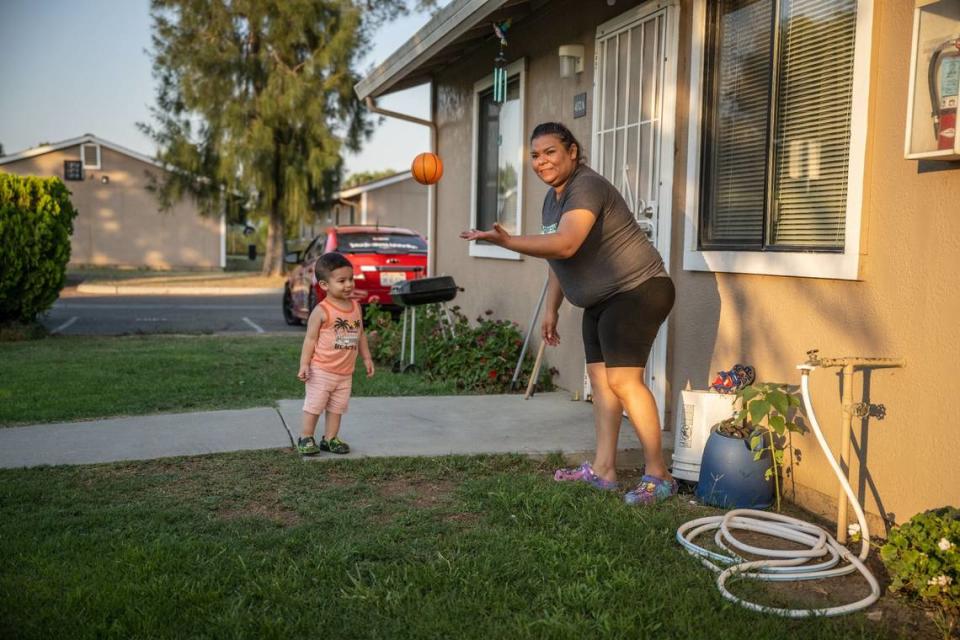
“There was a rise of more settled populations because families form over time,” said Ed Flores, faculty director of the UC Merced Community and Labor Center.
By fiscal years 2019-2020, just 8% of the state’s farmworkers were migrants. The overwhelming majority were settled.
The decrease in migrant workers is mostly due to changes in U.S. immigration policy and other factors. Yet California still needs seasonal farm labor, and the state’s $15.50 minimum wage means workers earn more than they would in Mexico or other places in the United States.
When the agricultural season ends, the state’s expensive housing sends workers back across the border or to states like Arizona, Texas and Oklahoma.
Although fewer farmworkers migrate, the state has not changed much about the way it operates the migrant housing centers.

The housing is owned by California Department of Housing and Community Development, which uses state dollars to subsidize rents. Most farmworker families pay less than $400 per month to live in the apartments. The 1,885 units are home to more than 7,000 people, about 27% of whom are school-age children.
California does not directly pay rent for residents living in any other affordable housing, most of which the federal government subsidizes.
Local housing authorities, nonprofits and growers’ associations own the land and manage the migrant centers, which are concentrated in agriculture-heavy areas of the Central Valley and on the Central Coast.
To qualify for units, residents must work in agriculture and meet certain income thresholds. They also need to demonstrate their status as migrants by moving at least 50 miles away for three months after the centers close for the season.
Centers are operated on a seasonal basis, with most opening in April or May and closing in October from November. This leaves a large portion vacant for months, except for a small number that local communities use as emergency shelters during the winter.
Migrant center conditions
The Sacramento Bee visited seven centers on the Central Coast and in the Central Valley during the spring and summer and found their conditions vary widely.
Some units at the Patterson and Davis migrant centers lacked working air conditioning. Residents at Atwater-Livingstone reported having their cars and catalytic converters stolen due to what they said was poor security.
Migrants at the Buena Vista center in Watsonville said their tap water had a strange smell and looked cloudy. They bought bottled water instead of drinking it. A small sign in the laundry room warned the center’s water contained the chemical Perfluorooctanoic acid (PFOA) “above the public health-based response level.”
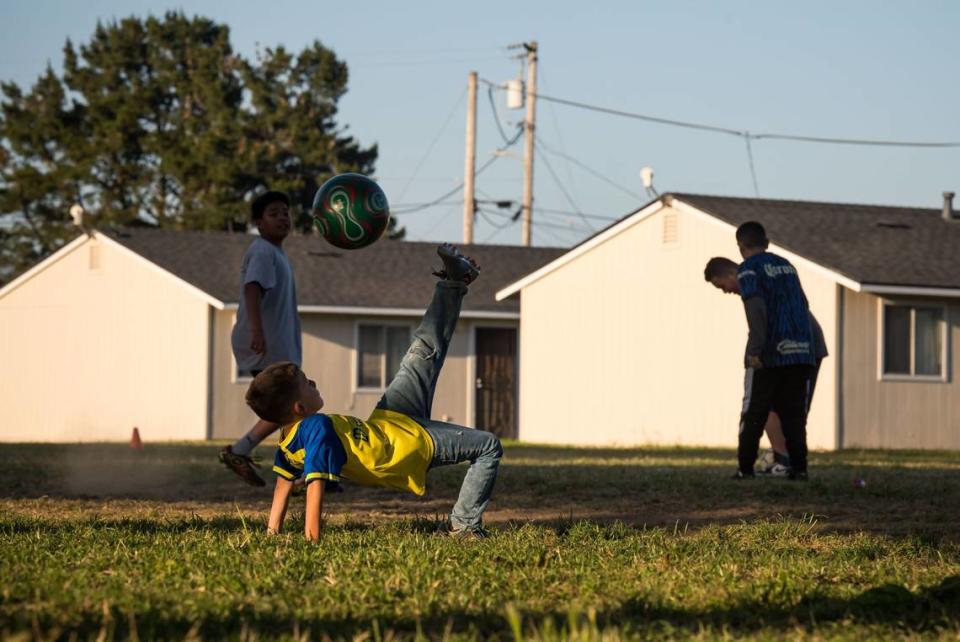
But the explanation was printed only in English.
Portions of the Hollister center were closed for renovations. Completed units had new flooring and blinds.
“(The centers) were built at different times and had different levels of funding for rehabilitation over years,” said Lindy Suggs, director of HCD’s Office of Migrant Services.
The housing has a budget of about $16.95 million for the 2023-2024 fiscal year. About $5.6 million comes from the state, with rent payments providing the additional money. The centers’ most recent allocation also includes an extra $4.4 million for broadband internet installation.
Gov. Gavin Newsom in 2021 announced the state would invest $30 million in deferred maintenance projects at the centers, although some have yet to be completed.
Why families still migrate
The Bee surveyed 150 migrant farmworkers living at the centers about their experiences and whether they would stay year-round if they could.
Most families had lived in the centers for at least five seasons, with about 41% returning for 10 seasons or more. Many migrants had heard about the centers from friends, family or co-workers.
Some had lived there as children and returned as adults with their own kids. Entire extended families live at some of the centers, with siblings, parents and cousins all in close proximity to each other.
When asked why they migrate, more than 50% of those who responded to the question said the high cost of rentals outside the centers was a factor. Others could not find work after the season ended, and some had permanent homes in cheaper areas, including Mexico, Arizona and Texas.
But more than 80% said they would stay at the migrant centers if they remained open year-round.
Elizabeth Saavedra Barrera began living at the Williams Migrant Center with her parents 10 years ago.
“I didn’t like it,” said Saavedra Barrera of her first season at the center. “Because I (went) to school and I didn’t understand nothing.”
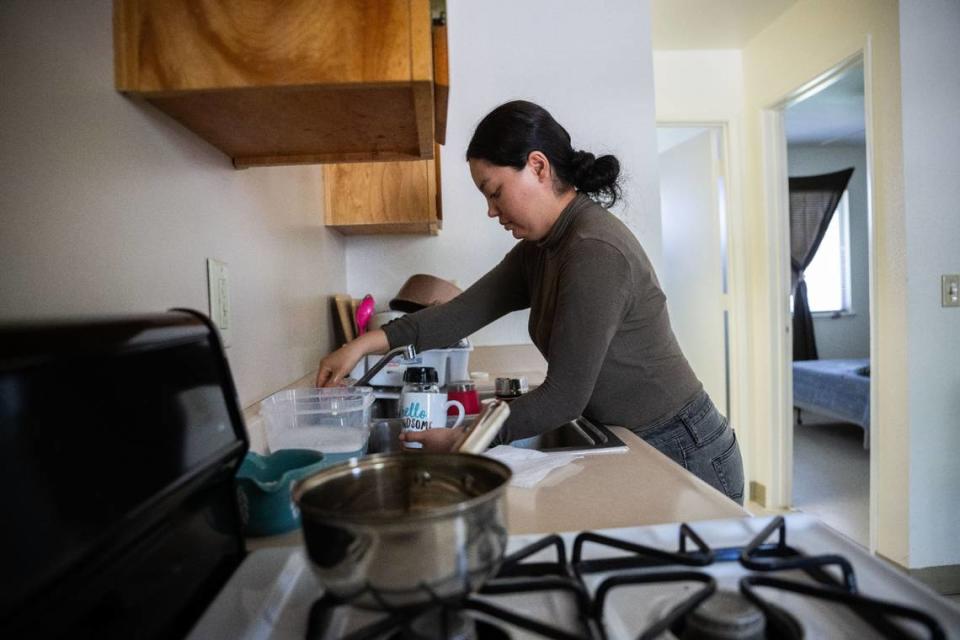
Over the years, the migrant center has grown on Saavedra Barrera. She came back as an adult with her husband.
She did not graduate from high school, but she eventually got her GED. When she returns to Jalisco, Mexico, at the end of the season, she works in cosmetology. In the United States, her lack of fluency in English makes it challenging to pursue similar work.
When asked if she would continue migrating if the center remained open year-round, she did not hesitate to answer.
“I really like (living) here,” Saavedra Barrera said. “The people, the neighbors. I feel like it’s my home, and when it’s closed it feels sad.”
Opening the centers year-round?
Advocates argue California needs to reconsider its use of the centers and potentially make them available year-round.
Even with significant pay raises, market-rate housing would be beyond most migrants’ reach. The median family income for farmworkers in 2019-2020 was $30,000 to $34,999. Median pay for those who responded to The Bee’s survey was $16 per hour, which adds up to roughly $32,000 per year.
Rentals in the seven counties where The Bee visited migrant centers are particularly unaffordable for low-wage workers. Three-bedroom apartments range from $1,341 per month in Colusa County, where the Williams Migrant Center is, to more than $4,000 per month in Santa Cruz County, the site of the Buena Vista Migrant Center, according to the National Low Income Housing Coalition.
Families in Colusa County would need to earn more than $53,000 to afford a three-bedroom apartment, and those in Santa Cruz County would need to earn more than $163,000, the Coalition reported.
Subsidized, income-restricted units are the only option for many workers, said Lauren Ornelas, a farmworker advocate and founder of the Food Empowerment Project.
“Growers aren’t paying them a living wage, so we need to subsidize it,” said Ornelas, who has worked extensively with workers at the Buena Vista center.

The centers’ locations are also an issue. Nearly all are in remote rural areas, in some cases near landfills or county jails.
Keeping migrants in isolated housing and pushing them to leave every few months does not help them move up economically, said Ana Padilla, executive director of the UC Merced Community and Labor Center.
“Is the purpose for providing resources like farmworker migrant centers to ensure that farmworker communities remain separate?” she asked. “Or is it with the intention of creating equity and opportunity, so that children who are growing up in these farmworker centers, for example, have the same opportunities as children living outside of them?”
Few affordable housing options
Options are limited for the 80% of surveyed migrant households who want to remain in their communities year-round.
Some affordable housing exists, but not enough to meet farmworkers’ needs.
HCD offers year-round multifamily and single-family farmworker housing through the Joseph Serna, Jr. Farmworker Housing Grant Program. It provides money for developers to use as leverage when they compete for low income housing tax credits or other sources of funding for new construction.
From 1978 to 2018, the agency spent $271.5 million — or about $6.8 million per year — to develop 138 projects with a total of 7,913 units, nearly 80% of which are set aside for farmworkers.
During the past five years, HCD has awarded nearly $300 million more in Serna funding for 56 new farmworker projects with 3,577 units. Many of the current and upcoming Serna projects are located in the same counties as the migrant centers.
HCD says it will begin requiring developers and owners of the Serna projects to market the year-round housing to migrant center residents.
The agency could also potentially offer priority to center families who want to transition, said Suggs, the Office of Migrant Services director. The directive would require proposed legislation or statutory changes, Suggs added.
“We want to provide a path for those who come in,” Suggs said. “Maybe (the centers) are more of a transitional-type setting and, then ultimately, they become members of the community.”
Still, the new housing will only affect a small percentage of the state’s nearly 1 million farmworkers.
Local governments and nonprofits will also likely need to spearhead the construction of more agricultural labor housing. That’s how Mutual Housing at Spring Lake in Woodland was built.
The housing has provided permanent affordable apartments for farmworkers since March 2015. It was the first complex of its kind in the Sacramento area, and it uses U.S. Department of Agriculture funds to provide rental assistance. Residents pay only about 30% of their income toward rent.
Mutual Housing California, a nonprofit developer of affordable housing communities, established the complex with funding from multiple sources, including federal and state tax credits, the city of Woodland and $1 million from the Serna program. But a crucial component of the project was using community organizers to help the nonprofit develop rapport with the city and farmworkers, said Roberto Jimenez, CEO of Mutual Housing California.
“They spent a lot of time on the ground building relationships which led to trust,” Jimenez said. “So that when the housing got built, we had the trust in place and we knew where to find people and help them get into the housing.”
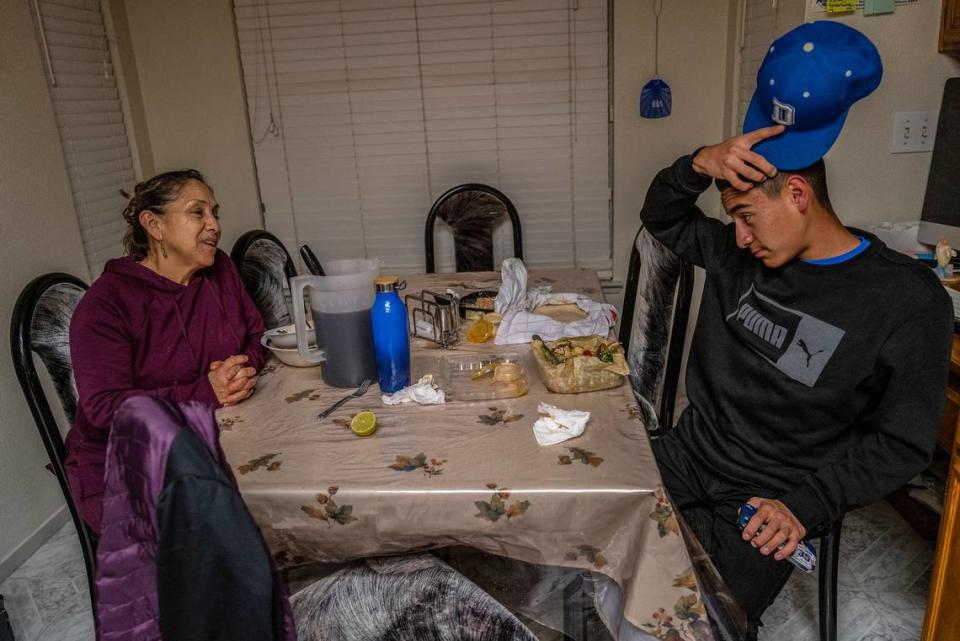
Margarita Anaya de Chávez moved there in March after three years at the Davis Migrant Center in Dixon. She had wanted to settle for years, especially for her teenage son, who is a junior at Davis High School. But her sense of urgency grew when her mother was diagnosed with stage four cancer and began chemotherapy appointments.
The search for long-term housing took six months, even with the help of Yolo County housing advocates.
This change has been beneficial, Anaya de Chávez said. Before the move, the family would split, with Anaya de Chávez returning to Mexico and her son staying in Davis with an aunt. The two could go weeks without seeing each other.
Now, her son never has to change schools or face being separated from his family. Settling has also eased Anaya de Chávez’s worries about missing her mother’s doctor appointments.
She pays $390 per month for her new unit, up only $10 from her previous rent at the migrant center. Anaya de Chávez has had such a positive experience in the Woodland housing that she is now recommending it to family members and friends who still live in the Davis center.
Overall, she said, the newer complex shares many similarities with the migrant housing, particularly its amenities and sense of community. But there’s one huge difference.
“I’m not worried anymore,” Anaya de Chávez said. “In the camp, I was always worried.”
Are migrant center changes possible?
Converting the centers to year-round residences would require action by the Legislature and a significant increase in funding for renovations. Most are not constructed for year-round use, with many units lacking heat.
Some California lawmakers are willing to explore a year-round possibility, but they have not fully committed.
Assembly Speaker Robert Rivas, D-Hollister, said he would like to have a “better understanding of how (the migrant centers) are used and how the state can support the best use of the sites” and acknowledged the migratory lifestyle leads to a “perpetual cycle of poverty and of this legacy farm work.”
Rivas, the grandson of a farmworker, spent part of his childhood in grower-provided housing. In 2022, he authored a measure requiring HCD to study farmworker housing conditions across the state and develop a plan to help improve their situation by 2026. HCD plans to start the study this month.
Rivas stopped short of saying the migrant centers should be open year-round but conceded keeping them closed and empty for months “doesn’t make sense.”
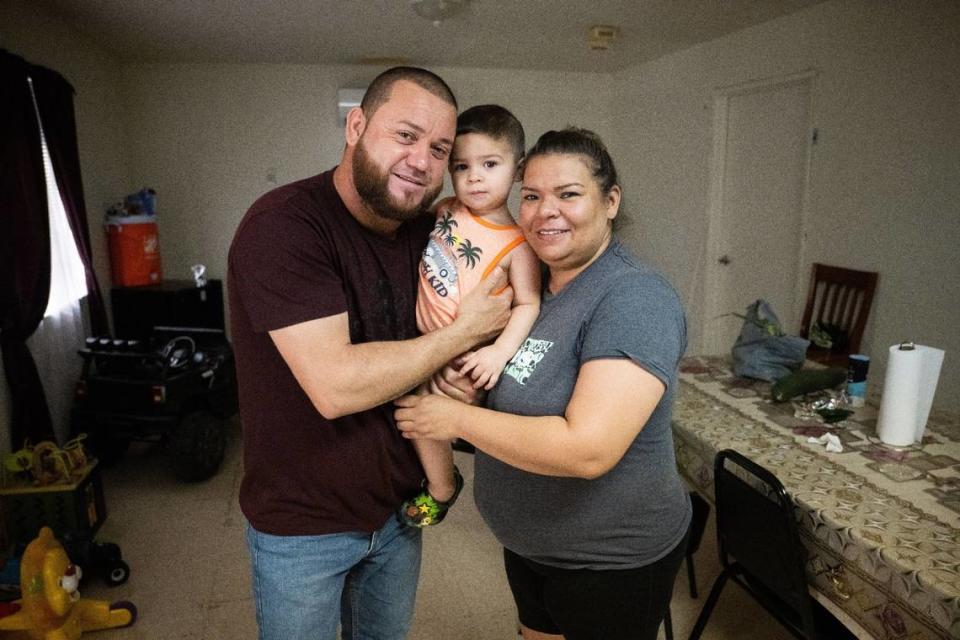
Sen. Anna Caballero, D-Merced, authored a 2018 bill creating an exemption to the rule requiring families to move at least 50 miles away after the centers close. The measure allowed those with school-age children to remain in the communities near the centers. The policy will sunset in January.
Caballero was in favor of keeping the centers open year-round.
“If people want to stay, I don’t see why we would make them leave,” Caballero said.
But Caballero was not as sure about investing funds into renovating the centers, answering “could be,” when asked whether it’s time for the state to spend the money.
HCD declined to take a position on year-round availability, saying the closures and annual moves are necessary to maintain the housing specifically for migrants. Keeping their units entirely separate ensures migrants do not compete for housing with farmworkers who stay in California year-round, said Pablo Espinoza, an HCD spokesman.
He also pointed to the centers’ occupancy rates as evidence of demand. At the peak of harvest season, the 24 migrant centers reach 99% occupancy, according to HCD.
Some centers have waitlists with dozens of families, Espinoza said. HCD did not provide the waitlist statistics for all the complexes, saying they do not require center operators to provide data after the housing is full.
When asked how much it would cost the state to renovate the centers into year-round housing, Espinoza declined to answer, saying HCD would not engage in hypotheticals and had not calculated an estimate.
“There’s a ‘chicken and the egg,’ right?” he said. “Is there an impact because the migrant centers don’t open 12 months out of the year? Or is there an impact because the families are choosing to move out?”
Page development by Gabriela Hanna, Susan Merriam and David Newcomb.

